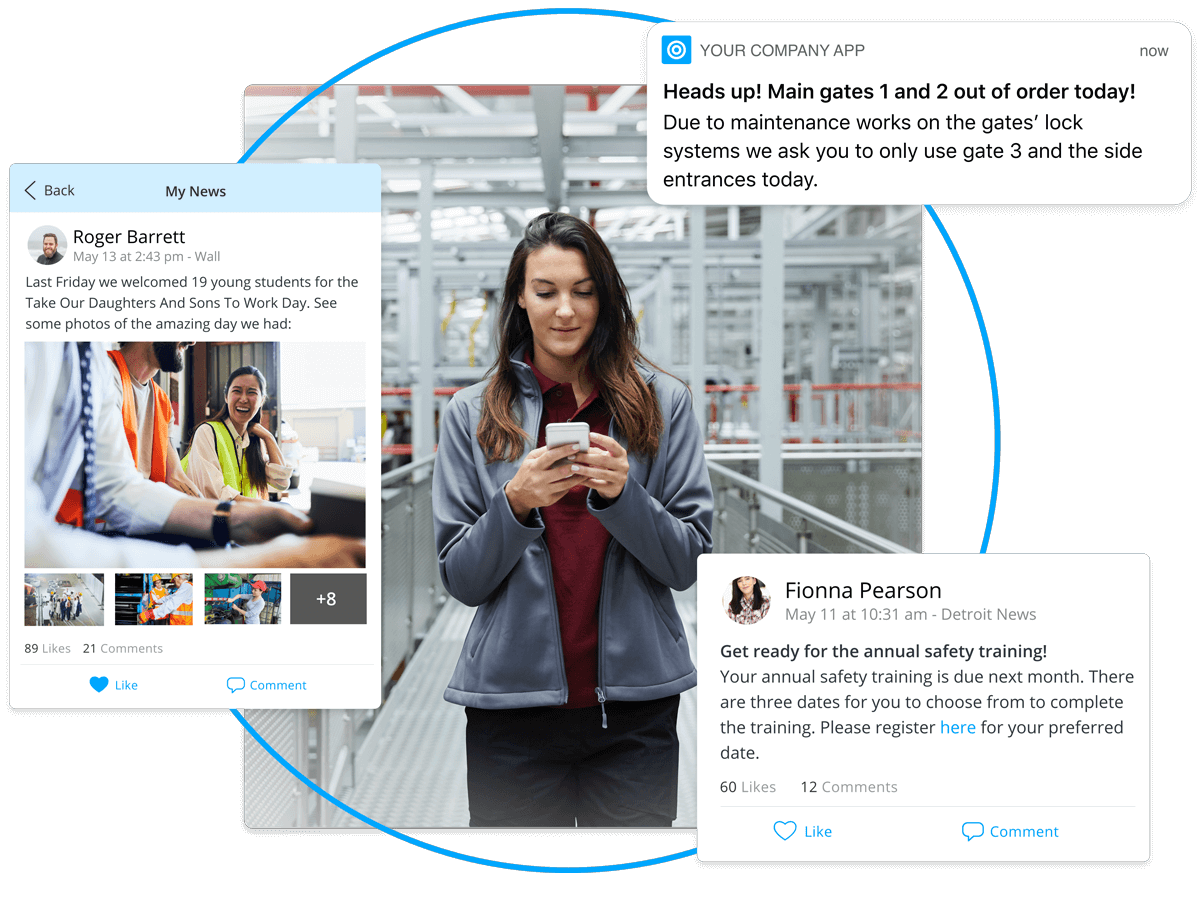The Internal Communications Playbook for Manufacturing
Best practices for engaging non-desk workers with a modern internal communications strategy.

The current state of things
Non-desk workers in the manufacturing industry account for roughly 427 million individuals globally. These are your engineers, technicians, operators, inspectors, and line workers. More often than not, however, these valuable employees lack the unified information-sharing and communications systems most desk workers have grown to expect. Email is non-existent, pay stubs are printed or accessible only via laptop, vacation requests get lost in a sea of HR paperwork, and open enrollment for benefits is confusing.
According to Gallup in their “State of the American Workplace” report, only 25% of these workers are actually engaged at work. A full eight percent lower than the national average, making it the least engaged occupation across the U.S.
These are The Forgotten Employees whose sole connection to corporate exists via printed newsletters, the rare face-to-face meeting, or a bulletin board. Further, as organizations grow, so do the problems plaguing the Forgotten Employee. This leads to inadequate corporate culture and extremely costly turnover. In fact, without a proper communication plan in place for ALL employees, more growth means more problems.
In this playbook, we’ve outlined the best practices for engaging non-desk workers with a modern internal communications strategy. We developed it in conjunction with our most successful customers, whose workforces range anywhere from 1,000 to 500,000+ employees.
Specifically, you’ll learn how to:
Identify the most common pain points when communicating with non-desk employees on the plant floor.
Equip your comms with the core features they need to engage all employees.
Drive engagement, retention, and business outcomes through improved two-way communication.
Prepare for the next generation of manufacturing workers.
Why are your non-desk workers struggling to hear and be heard?
Outdated Kiosks
Employee computer kiosks play a major role in many existing internal communications on the plant floor, allowing access to things like HR materials, time reporting, and company calendars. However, these machines have the inherent flaw in that the connectivity achieved is one-dimensional. They don’t allow for continuous connectivity to the tools that employees need to be successful. They are only engaged when they are on site, taking time away from work. Further, even when offered access to this limited technology, less tech-savvy workers are still challenged to use it for any length of time while those more comfortable are frustrated by its limited accessibility.
Cumbersome Safety Protocols
When something goes wrong on the factory floor, it’s vital that safety protocols are easily accessible and always up to date. Many manufacturers, however, still rely on the old-fashioned binder-in-a-drawer technique. Not only is this single source of information easily misplaced and prone to outdatedness, but it’s solely a responsive method of emergency preparedness. These binders offer little by way of preventative capabilities of alerting a workforce to potentially hazardous conditions.
The Blue-Collar Skill Gap
Between 2018 and 2028, an estimated 2.4 million manufacturing jobs have the potential to go unfilled in the US due to a shortage of qualified workers. With 75% of manufacturers reporting a moderate to severe shortage of skilled workers, a large population of skilled workers reaching retirement age, and a traditionally negative image of manufacturing work among young people, this skill gap in the talent pool over the next decade has a potential economic impact of roughly 2.5 trillion dollars.
Lack of Local Community
The greatest pain point for manufacturing leadership is speaking to their employees. More than four out of five (82%) said that speaking to their employees was difficult or very difficult. This attitude lends itself to an isolated and disconnected local workforce that lacks the opportunity to engage with company culture despite the proven business value of a more engaged employee. Without a system in place to facilitate a local-specific culture, non-desk employees—and the business as a result—are stopping short of their true potential.
Download our Communications Playbook for Manufacturing to learn how your company can better engage non-desk workers on the factory floor with a modern internal communications strategy, developed in conjunction with our most successful customers.



